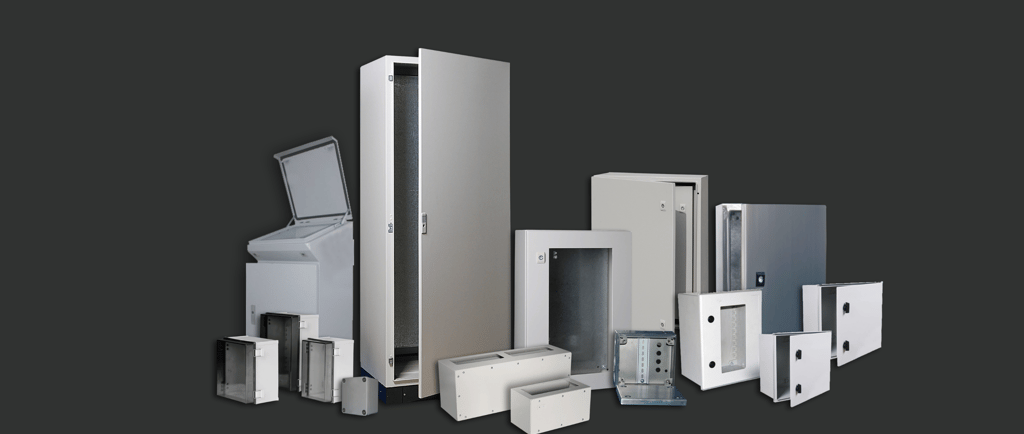Innovations in Electrical Fiberglass Box Technology: What's New on the Horizon
6/10/20244 min read


Introduction to Electrical Fiberglass Box Technology
Electrical fiberglass boxes have become an essential component in modern electrical systems, primarily due to their unique properties and advantages over traditional materials like metal or plastic. These enclosures are designed to house and protect electrical components, ensuring the safety and efficiency of electrical installations in various environments.
Fiberglass, a composite material made from fine fibers of glass embedded in a resin matrix, offers several key benefits that make it ideal for electrical enclosures. One of its most significant properties is durability. Fiberglass boxes are exceptionally strong and resistant to impact, which enhances their ability to protect sensitive electrical components from physical damage.
Another crucial characteristic of fiberglass is its non-conductive nature. Unlike metal enclosures, fiberglass does not conduct electricity, reducing the risk of electrical shocks and short circuits. This makes it a safer option for housing electrical components, particularly in high-voltage applications. Additionally, fiberglass is resistant to a wide range of environmental factors, including moisture and UV radiation. This resistance ensures that fiberglass enclosures maintain their structural integrity and protective capabilities even in harsh outdoor conditions.
When compared to traditional materials, fiberglass offers a superior combination of strength, safety, and environmental resilience. Metal enclosures, while strong, are prone to corrosion and can become hazardous in certain conditions. Plastic boxes, on the other hand, may not offer the same level of durability and can degrade over time when exposed to UV light and extreme temperatures. Fiberglass electrical boxes provide a balanced alternative, delivering robust protection without the drawbacks associated with metal or plastic.
Understanding these foundational aspects of fiberglass technology sets the stage for exploring the latest innovations in electrical fiberglass box technology. As the electrical industry continues to evolve, advancements in materials and design are driving the development of even more efficient and versatile fiberglass enclosures.
Recent Technological Advancements
The realm of electrical fiberglass boxes has witnessed substantial technological advancements, significantly enhancing both their performance and applicability. One of the primary breakthroughs lies in the improvement of material composition. Modern electrical fiberglass boxes are now manufactured using advanced composites that not only bolster strength and durability but also improve resistance to environmental factors such as UV radiation, chemicals, and extreme temperatures. This enhancement ensures that these boxes can endure harsher conditions while maintaining their structural integrity over extended periods.
The integration of smart features represents another leap forward in the evolution of electrical fiberglass boxes. IoT-enabled monitoring systems have become increasingly common, allowing for real-time data collection and remote management. These systems can monitor various parameters, such as temperature and humidity levels inside the box, and alert maintenance personnel to potential issues before they escalate into costly failures. This proactive approach not only enhances operational efficiency but also extends the lifespan of the electrical components housed within these boxes.
Advancements in manufacturing processes also play a crucial role in transforming the landscape of electrical fiberglass box technology. The advent of 3D printing has revolutionized the way these boxes are designed and produced, enabling highly precise and complex geometries that were previously unattainable. Additionally, automated production lines have increased manufacturing speed and consistency, reducing lead times and ensuring higher quality standards. These innovations collectively contribute to more efficient and cost-effective production.
Design improvements have also made electrical fiberglass boxes easier to install and maintain. Ergonomic designs that consider ease of access and modularity are becoming standard, simplifying both the initial installation and any subsequent maintenance work. Furthermore, the development of customizable solutions allows for electrical fiberglass boxes to be tailored to specific industry needs, offering bespoke configurations that meet unique operational requirements. These tailored solutions ensure that each application receives the most effective and efficient protection for its electrical components.
Future Trends and Potential Developments
The landscape of electrical fiberglass box technology is poised for significant advancements, driven by emerging trends and cutting-edge developments. One of the most promising areas of innovation is the incorporation of nanomaterials. By embedding nanomaterials into the fiberglass matrix, manufacturers can enhance durability and performance. These nanomaterials not only improve mechanical strength but also offer superior resistance to environmental factors such as UV radiation and chemical exposure, thereby extending the lifespan of electrical fiberglass boxes.
In addition to material enhancements, the integration of renewable energy components is gaining traction. Electrical fiberglass boxes with built-in solar panels or energy harvesting systems are on the horizon. These advancements aim to provide self-sustaining power sources for remote installations, reducing dependency on traditional energy grids and promoting the use of clean energy. This approach not only ensures reliable power supply but also aligns with global sustainability goals.
Sustainability is indeed a critical focus in the future of fiberglass box production. The industry is shifting towards eco-friendly manufacturing practices, such as using recycled materials and reducing carbon emissions during production processes. Innovative manufacturing techniques, like 3D printing, are also being explored to minimize waste and enhance the precision and customization of fiberglass boxes.
Experts predict that these technological advancements will significantly influence the electrical industry. Enhanced durability and performance of fiberglass boxes will result in lower maintenance costs and increased reliability of electrical installations. The integration of renewable energy components is expected to support the growing demand for sustainable solutions in various sectors, including residential, commercial, and industrial applications.
In summary, the future of electrical fiberglass box technology is bright, with innovations centered around nanomaterials, renewable energy integration, and sustainable manufacturing practices. These developments are set to redefine industry standards, offering more durable, efficient, and environmentally friendly options for electrical infrastructure.
